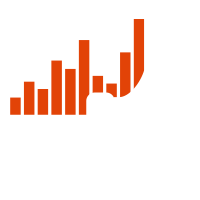- Solutions
Healthcare
- Resources
The six stages of business analytics
Find out where you are, and where you could be.
Every day, more enterprises are realizing how important it is to compete on real Big Data analytics. A lot are realizing they have a long way to go. Here’s a quick way to see where your enterprise is on the Big Data Maturity Curve. Obviously, the higher your level of adoption, the better.
1
First Gear
In every organization, there are always innovators who understand that knowledge is money. When enterprises are at this stage, a handful of users are attempting to make sense of the volume, variety and velocity of Big Data that floods the enterprise every day, but they have no practical way to realize value from it.
- Very few users
- Incompatible data from disparate sources
- Reporting not intuitive
- Spreadsheet Anarchy
- Low extensibility
- Data quality gaps
- Management by anecdote
The Result
Little insight into what happened.
2
Second Gear
At this stage, the Do-It-Yourselfers in the office have enjoyed some limited success. Typically, they are analysts who want to understand the big picture, and have little contact with the day-to-day operations of the business. They rely mostly on monthly reports, so whatever insights they gain are 30 days in arrears.
- Power users only
- No business users
- Some database structure
- Dependent on IT
- No BI roadmap
- Emphasis on monthly reports
The Result
Power users have some insight into what happened.
3
Third Gear
At this level, the real benefits of analytics start to emerge. The more forward-thinking people begin to realize that having certain metrics could help them improve outcomes. Sometimes, these people are in the C-suite, and sometimes they are department heads or assistants. In almost all cases, users at this level are comfortable with sophisticated statistics, including conjoint analyses and regression analyses. The data they work with, however, limits them to mostly lagging indicators, and possibly a few leading indicators.
- Selected users
- Specific metrics
- Some departments getting value from some functions
- Mostly lagging indicators
- A few leading indicators
- Some advanced KPIs
The Result
Users have some tactical understanding of what happened and why.
4
Fourth Gear
The real benefits of analytics happen when business users receive input based on specific KPIs that lead to improved outcomes. Underlying the system, there is data governance that ensures disparate data is transformed onto a common platform. By this point, the majority of users are less interested in theoretical knowledge and more interested in business results. Instead of outdated reports, managers receive actionable insights that help them make more effective tactical and strategic decisions. Analytics are well on their way to enterprise-wide adoption, because the ROI they deliver has become crystal clear.
- Business users
- Report findings up to C-suite
- KPIs broadened to include strategic focus areas
- ROI of analytics becomes clear
- Enterprise-wide usage begins
The Result
What is happening tactically and strategically? All users understand in current time.
5
Fifth Gear
When analytics reach this stage in an enterprise, they are no longer a curiosity, a pilot program, or the property of a privileged few. They are an integral part of the business process, from the cubicle to the corner office. Each user is presented with fresh insights every day that have been configured to optimize their individual performance. Top management gets a 30,000-foot view of important trends, but can drill down to the most granular detail with just a few clicks. Staff members get intelligent worklisting that helps them evolve from knowledge workers to decision workers. At this level, the enterprise is definitely competing on analytics.
- Users at all levels, from C-suite to cubicles
- Quantitative and qualitative metrics
- Simple, accessible user experience
- Relevant data finds right users
- Embedded analytics
- Actionable worklists improve outcomes
The Result
What actions should we take? All users understand clearly.
6Top Gear
To borrow from Isaac Newton, once a body is in motion, it tends to remain in motion. Even more so with analytics. When an enterprise reaches Fifth Gear maturity, it doesn’t stop there. As ROI compounds, the number of users, use cases, and new apps continues to accelerate. When analytics are based on data that is continually uploaded, transformed, and refined, natural feedback mechanisms lead to solutions that match the goals of the enterprise – and the needs of the users – even more closely.
- Insights pushed throughout entire enterprise
- Intelligence finds users
- Embedded Kanban
- Advanced management by exception
- Continuous self-updating predictions driven by learning algorithms
The Result
Are actions improving? Are forecasts changing? What are the new predictions? All users get personalized answers by role.
© 2024 VisiQuate, Inc. All Rights Reserved.




